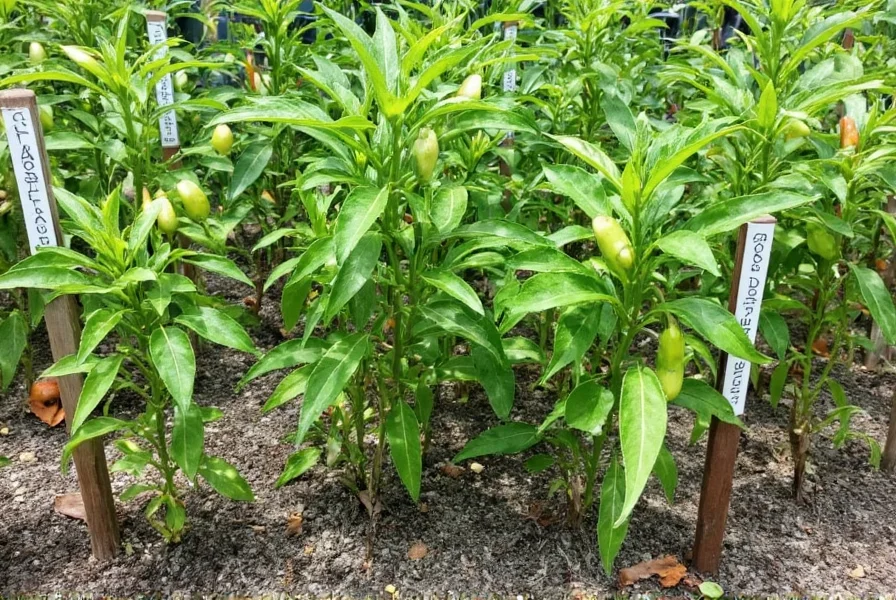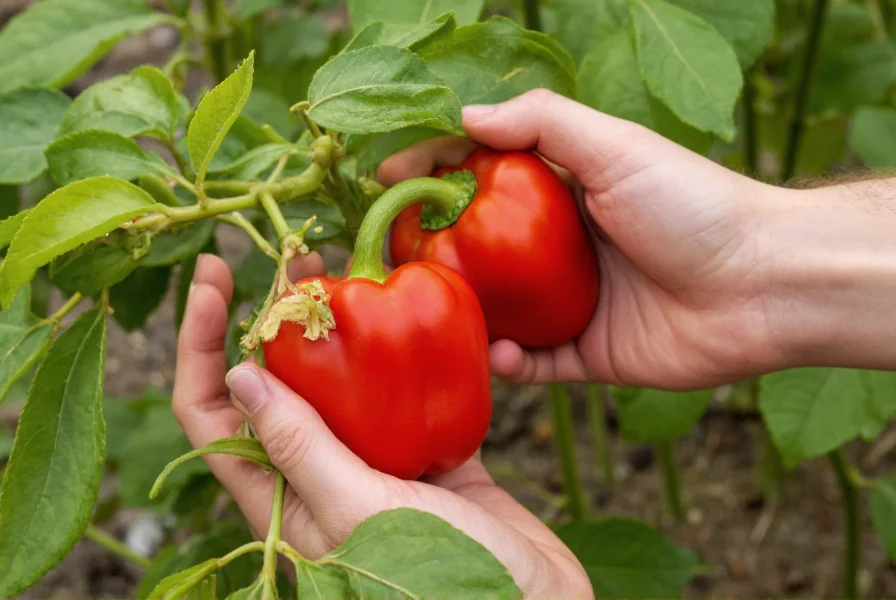Creating a productive pepper garden brings fresh, flavorful produce right to your doorstep. Whether you're working with a sprawling backyard plot or a compact container setup, understanding pepper plant requirements ensures bountiful harvests throughout the growing season. This comprehensive guide covers everything you need to transform your space into a thriving pepper paradise.
Understanding Pepper Varieties for Your Garden
Pepper varieties fall into three main categories, each with distinct growing requirements and flavor profiles. Sweet peppers like bell peppers and pimientos offer crisp texture and mild flavor, making them versatile for fresh eating and cooking. Hot peppers range from moderately spicy jalapeños to intensely fiery habaneros and ghost peppers, with heat levels measured in Scoville Heat Units (SHU). Ornamental peppers provide visual interest with colorful fruits while often packing significant heat.
When planning your pepper garden layout, consider maturity times—some varieties like banana peppers mature in 60 days, while others like habaneros may take 90-120 days. Grouping peppers with similar water and nutrient needs together simplifies garden management. For beginners, hybrid varieties often provide better disease resistance and consistent yields compared to heirloom types.

Optimal Soil Conditions for Pepper Plants
Peppers thrive in well-draining soil with a pH between 6.0 and 6.8. Before planting, amend your garden soil with 2-4 inches of compost to improve fertility and structure. Raised beds work exceptionally well for pepper gardens, as they warm faster in spring and provide superior drainage. Avoid planting peppers in areas where tomatoes, eggplants, or potatoes grew during the previous season to prevent soil-borne diseases.
| Pepper Type | Ideal Soil pH | Days to Maturity | Heat Level (SHU) |
|---|---|---|---|
| Bell Peppers | 6.0-6.5 | 60-90 | 0 |
| Jalapeños | 6.0-6.8 | 70-80 | 2,500-8,000 |
| Habaneros | 6.0-6.5 | 90-120 | 100,000-350,000 |
| Sweet Banana | 6.0-6.8 | 60-75 | 0-500 |
Planting Techniques for Maximum Yield
Start pepper seeds indoors 8-10 weeks before your last expected frost date. Use biodegradable pots to minimize root disturbance during transplanting. When seedlings develop 2-3 sets of true leaves and nighttime temperatures consistently stay above 55°F (13°C), begin hardening them off by gradually exposing them to outdoor conditions.
Plant pepper seedlings deep, burying up to the first set of leaves to encourage stronger root development. Space plants 18-24 inches apart in rows 24-36 inches apart, depending on variety size. For container gardening, choose pots at least 5 gallons in size with adequate drainage holes. Black plastic mulch helps warm the soil and conserve moisture, particularly beneficial for heat-loving varieties.
Essential Care Practices Throughout the Growing Season
Consistent moisture is critical for preventing blossom end rot and ensuring healthy fruit development. Water deeply 1-2 times per week, providing 1-2 inches of water, and avoid overhead watering to reduce disease risk. Apply 2-3 inches of organic mulch to maintain soil moisture and temperature.
Fertilize pepper plants with a balanced, slow-release fertilizer when transplanting, then switch to a low-nitrogen, high-phosphorus formula when flowering begins. Over-fertilizing with nitrogen promotes leafy growth at the expense of fruit production. Pinch off the first flowers to encourage stronger plant development before fruiting begins.

Managing Common Pepper Garden Challenges
Pepper plants face several common issues that can reduce yields if not addressed promptly. Blossom drop occurs when temperatures exceed 90°F (32°C) or drop below 60°F (15°C), while blossom end rot results from calcium deficiency often caused by inconsistent watering. Aphids, spider mites, and pepper weevils can damage plants, but beneficial insects like ladybugs provide natural control.
Prevent fungal diseases like phytophthora blight by ensuring proper air circulation and avoiding wetting foliage when watering. Rotate crops annually and remove plant debris at season's end to reduce overwintering disease organisms. For organic pest control, neem oil and insecticidal soaps effectively manage many common pests without harming beneficial insects.
Harvesting and Preserving Your Pepper Bounty
Harvest peppers when they reach full size and develop their characteristic color, though most varieties can be picked earlier for different flavor profiles. Use sharp scissors or pruners to cut peppers from the plant, leaving a short stem attached. Regular harvesting encourages continued production throughout the season.
Preserve your pepper harvest through freezing, drying, or pickling. Bell peppers freeze well for cooking, while hot peppers make excellent dried flakes or infused oils. For long-term storage, maintain harvested peppers in a cool, humid environment (45-50°F or 7-10°C with 90-95% humidity) where they'll keep for 2-3 weeks.
Season Extension Techniques for Longer Harvests
Extend your pepper growing season by using row covers during cool spring nights and providing afternoon shade during extreme summer heat. In cooler climates, grow peppers in containers that can be moved indoors when temperatures drop. Select early-maturing varieties for shorter growing seasons, and consider using black plastic mulch to warm the soil earlier in spring.
As temperatures cool in fall, remove new flowers to direct the plant's energy toward ripening existing fruit. In regions with mild winters, some perennial pepper varieties like certain chili types may survive and produce for multiple seasons with proper protection from frost.
Frequently Asked Questions About Pepper Gardens
How much sunlight do pepper plants need for optimal growth?
Pepper plants require at least 6-8 hours of direct sunlight daily for optimal growth and fruit production. In extremely hot climates (above 95°F/35°C), providing afternoon shade can prevent blossom drop and sunscald on fruits. Insufficient sunlight results in leggy plants with reduced yields and increased disease susceptibility.
Can I grow different pepper varieties together in the same garden?
Yes, you can grow multiple pepper varieties together, but maintain at least 18-24 inches between plants for proper air circulation. While cross-pollination between sweet and hot peppers won't affect current season fruit, it can impact seeds saved for next year. If saving seeds, isolate different varieties by 500 feet or use physical barriers to prevent cross-pollination.
Why are my pepper plants flowering but not producing fruit?
This common issue, called blossom drop, typically occurs due to temperature extremes (below 60°F/15°C or above 90°F/32°C), inconsistent watering, or excessive nitrogen fertilization. Ensure consistent soil moisture, avoid high-nitrogen fertilizers during flowering, and consider hand-pollinating flowers by gently shaking plants or using a small brush to transfer pollen between flowers.
What are the best companion plants for a pepper garden?
Excellent companion plants for peppers include basil (repels pests and enhances flavor), onions (deter aphids), and marigolds (repel nematodes). Avoid planting peppers near fennel or kohlrabi, which can inhibit their growth. Beans and peas make good companions as they fix nitrogen in the soil, though excessive nitrogen can reduce fruit production if not managed properly.











 浙公网安备
33010002000092号
浙公网安备
33010002000092号 浙B2-20120091-4
浙B2-20120091-4